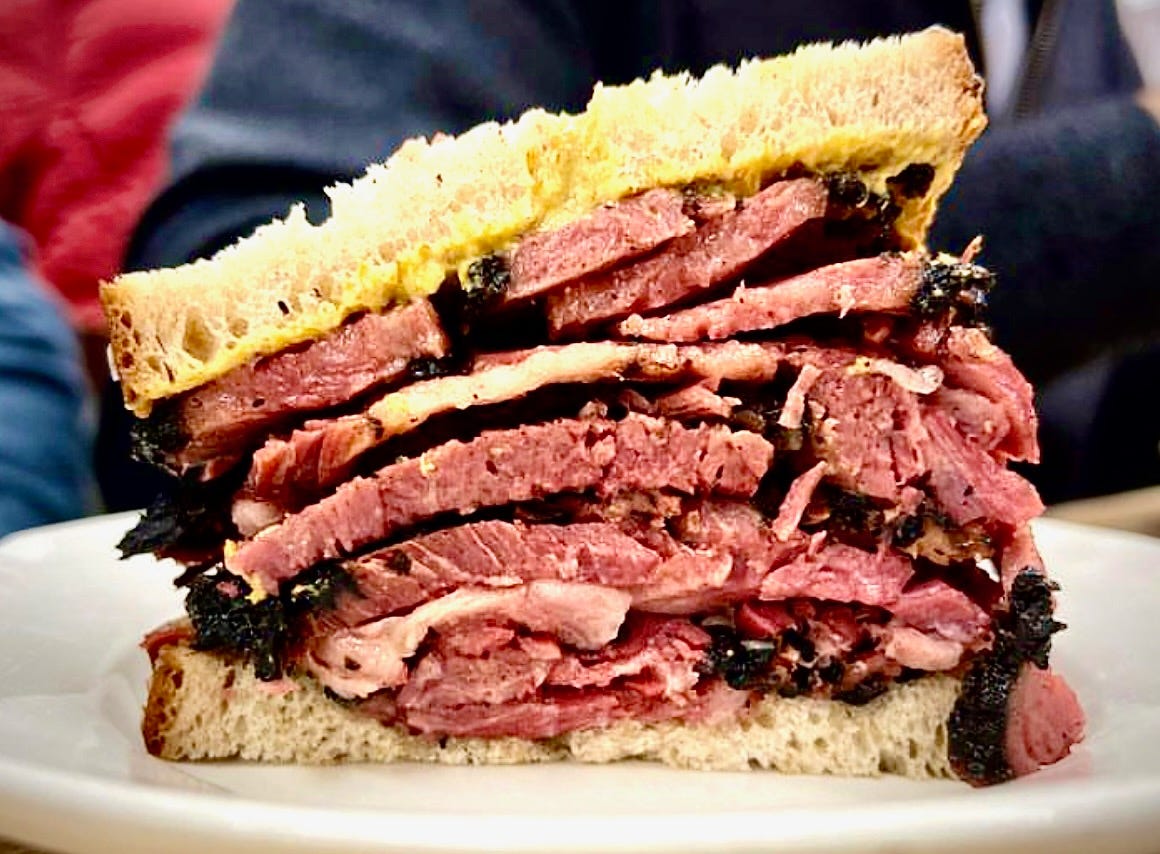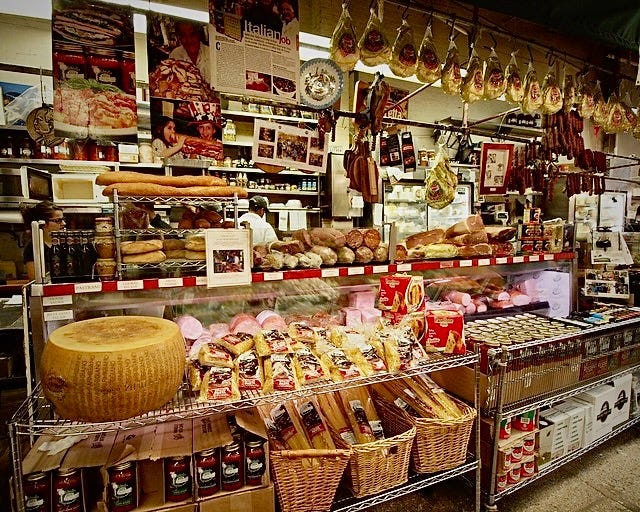Welcome back to Notable Sandwiches, the feature where I, alongside my editor David Swanson, trip merrily through the baffling document that is Wikipedia’s List of Notable Sandwiches, in alphabetical order. This week, a broad category—the deli sandwich.
But first, an author’s note: Money has been tight lately for a variety of reasons, and both David and I rely on this newsletter for rent, so if you’ve derived any joy, wisdom, handy factoids or useful rage from this publication, I’m once again imploring you to consider shifting your subscription to a paid one. At the moment, around 7% of subscribers to this newsletter are paid; the more of the remaining 93% that upgrade, the less we feel the gnawing and persistent tension of financial uncertainty ulcerating our bellies. The President’s Day sale continues, with subscriptions at just $4.17 a month. And I’m continuing to tinker with paid content!
OK, pledge drive over. Back to your regularly scheduled programming…
Fifty-five sandwiches in, this freewheeling culinary chronicle has begun to curl back in on itself: it’s become self-referential, playing the hits. This is partially a function of subject matter: as is true of every one of us, no sandwich stands in isolation. Instead, it exists in a world that cross-references and melds and creates recursive loops that nonetheless taste pretty good on an onion roll. Very few things can survive in proud isolation; even those strange barren peaks that rise out of the sea are home to the wheelings of birds, the lap of water that will someday course against a bather’s skin.
All of this is to say that this week’s subject—the “deli sandwich”—has already been largely covered, most recently in an entry on “corned beef.” There, we delved into the history of the delicatessen in America, and its representation in Jewish, Irish, and German-American cultures. So there is some familiar ground to tread, and a risk of redundancy; it’s hard to cover the history of corned beef without offering some substantive detail about the delicatessen.
A good deli offers more than corned beef, of course—and the modern version is heir to a number of cultures transposed and affixed behind counter glass. The Germans have braunschweiger and bratwursts, potato salad and schmierkase; the Italians, capicola and sopressata and mortadella; the Jews, in their wanderings, have picked up the odds and ends of any number of cultures, and come out with a Teutono-Slavic hash of brisket, tongue, chopped liver and soft unctuous mounds of pastrami. Add pickles, assorted cheeses, rounds of robust sourdough or caraway-flecked rye and you have yourself a meal that announces itself with panache on your tongue, and settles in for the afternoon in your belly.
The delicatessen, first introduced to the U.S. by German and German-Jewish immigrants in the nineteenth century, had exploded in popularity by the roaring ‘20s of the twentieth. The novel, well-spiced commodities on offer—coupled with the convenience of grabbing a pound of this and a half-pound of that for ready meals with minimal preparation required—made the corner deli a Jazz Age phenomenon.
“By the 1920s, delicatessens had broken the boundaries of ethnic neighborhoods and entered the mainstream,” write authors Andrew Coe and Jane Ziegelman in A Square Meal: A Culinary History of the Great Depression. “With Prohibition and the decade’s time-means-money economic boom, office workers turned to sandwiches as a perfect quick and inexpensive lunch.” It was a time of Model Ts rolling their efficient way down assembly lines, the pulsing beat of Mammon growing ever louder, “gobble-and-git” lunch joints replacing the elaborate eateries of yore, and America boldly striding into full industrialization, fueled by cured meats, mustard, and carbs.
By the middle of the twenties, contemporary pundits were wringing their hands at flapper wives spoiled by the convenience of the deli, neglecting their husbands’ need for sustenance. This led to a related phenomenon—the “delicatessen divorce.” One 1926 journal sympathetically chronicled the delicatessen divorce of a hapless San Francisco husband, who “informed the court that his ‘nervous system became seriously deranged’ because for eight years his wife had given him nothing more substantial than dill pickles, ice cream and chipped beef.”
A century later, in the thoroughly post-industrial era of one-tap food delivery, this much marital angst over a corner deli feels comical—and one wonders why the husband could not simply make himself a snack. (That being said, antediluvian attitudes about female autonomy have made a full and unwelcome comeback in recent years, much as I wish they could be ribboned to bits on the meat slicer of history.)
Sodium-addled spouses aside, the delicatessen has been providing convenient and delicious protein to the American people for over a century. Cold cuts and cured meats—salted, pickled, smoked and sliced, commingled and condimented and served on a bun—is a constant from Sarasota to San Diego. That constancy can be a unifying force, poignant as the tears drawn forth by too-sharp mustard. Like a great triple-decker, the best of humanity is found not in isolation but in joyous communion; no man is an island, and no sandwich is an island either (except the Sandwich Islands in the South Pacific, but that’s just semantics.)
None of us can abide on our own entirely, nor are we innocent of what has shaped us; as the author Robin Hobb puts it, “We are the sum of all we have done added to all that has been done to us.” Each steeped in the brine of our individual lives, we nonetheless create marvels when we come together, and in that union is satiety enough for any feast.









Joined the 3 percent. Party on, Talia.